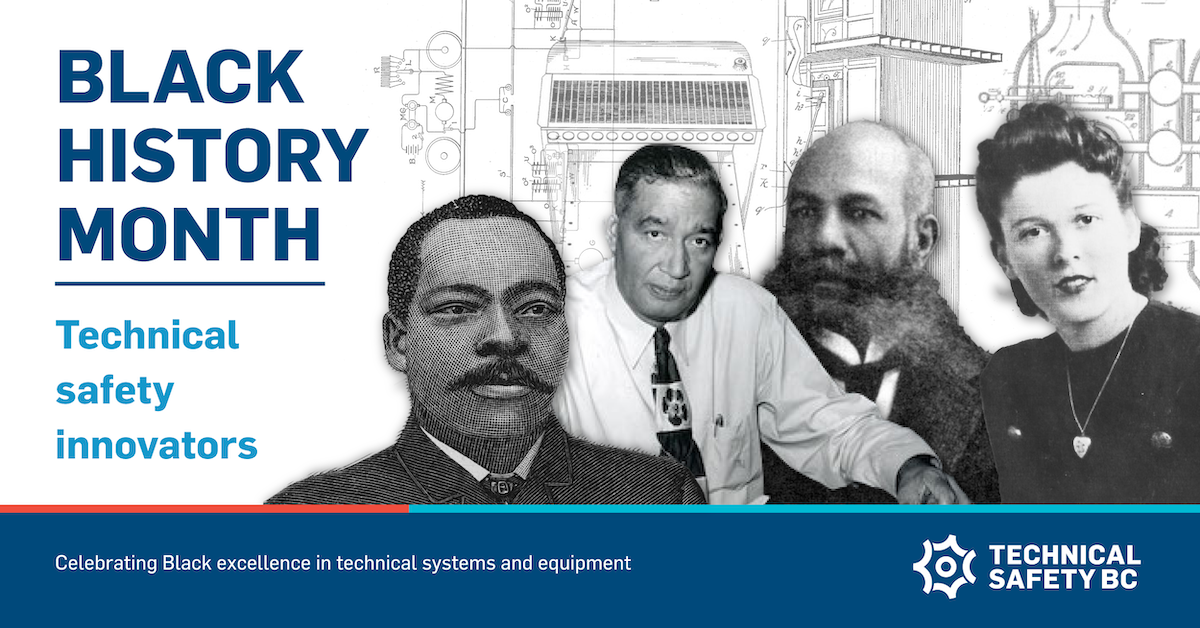February is Black History Month — an opportunity for Canadians to reflect, recognize and build understanding around the experiences of Black Canadians across the nation. Not only is Black History Month a time for reflection, but it is also a time for celebration and recognition of the significant accomplishments of Black individuals.
One of our core values is that we see the genius in diversity. We recognize that each of us brings our own unique perspective to the table, and when we collaborate with respect, we can have a greater impact on the safety system. This year, as part of our celebrations, we're highlighting four Black inventors and contributors who have impacted the technical equipment and safety field for the better.

Alexander Miles
Alexander Miles saw both risk and opportunity in an open shaft door while riding an elevator with his young daughter. He is best known for his 1887 patent on an automatic opening and closing elevator door design. Prior to Miles’ patent, elevators doors would have to be opened and closed manually by either elevator operators or passengers — a process with significantly more risk than automatic elevator door design.
Miles’ ingenuity lives on today — the influence of his patent is still seen in most modern standard elevator designs. In addition to improving physical safety, Miles continued his legacy of excellence with the creation of an insurance agency that aimed to eliminate discriminatory insurance rates toward people of colour.
Fredrick McKinley Jones
Throughout Fredrick McKinley Jones' career, he was granted more than 40 patents in the field of refrigeration and patented over 60 inventions in total. In 1935, Jones invented the first automatic refrigeration system for long-haul trucks and railroad cars. This was a revolutionary invention and eliminated the risk of food spoilage during transportation across the United States. Jones's passion for inventing new technologies was not limited to the refrigeration industry. He is also credited with developing a self-starting gasoline motor, designing a series of devices for the movie industry in the 1920s, inventing a snowmobile, and much more.
Alice H. Parker
Alice H. Parker was born in 1885, and was a Black inventor who designed and patented the first central heating system using natural gas. Her patent influenced the design of the modern-day central heating systems we see used today.
Parker was inspired to create the new technology after realizing that heating her home with a fireplace during a cold New Jersey winter was not enough to keep her warm. The heating system she designed provided warmth evenly and more efficiently throughout the building with individually controlled air ducts. On top of this, the gas furnace decreased the risk of house fires as it didn’t require leaving a burning fireplace on throughout the night and inspired improvements to the heating system, such as thermostats, which are still prevalent today.
Parker received the patent for her design in 1919, a revolutionary accomplishment as she filed the patent before the Civil Rights Movement and Women’s Liberation Movement!
Granville Tailer Woods
Granville Tailer Woods was the first African American to become an electrical and mechanical engineer. Woods (1856 – 1910) is credited with improving transportation system safety in the United States, and he held over 60 patents throughout his professional life.
Early on in his career, Woods worked at a machine shop and developed the skills of a machinist and blacksmith before attending college to study mechanical and electrical engineering. His experience and education led him to work as an inventor and electrical engineering entrepreneur. Throughout his career, he developed some incredible technologies — inventing and patenting tunnel construction for electric railroads and improving the telephone transmitter that combined the telephone and the telegraph. Unfortunately, other people often attempted to take credit for Woods’ work.
Today, we are inspired by the work of Granville Tailer Woods, and we’re excited to be able to celebrate the impact that he had on safety in the rail industry.

.png)

.jpg?width=352&name=istock-1146472797%20(1).jpg)
